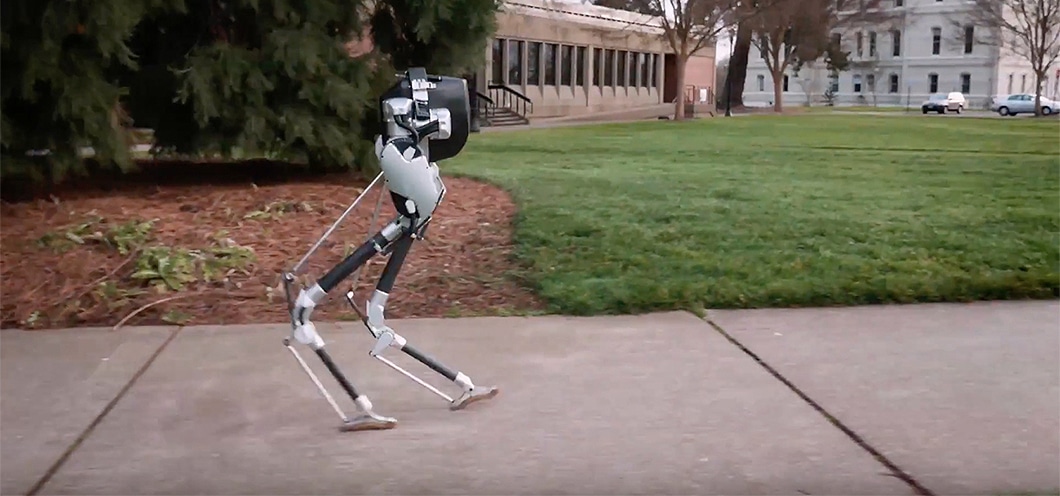
Agility Robotics
Two-legged robots are nothing new. But building a bipedal machine that is as swift, agile, and versatile as a human? That’s something remarkable.
Mastering the motion required to move on hind legs is difficult. Humans use multiple senses to achieve the finesse that the simple task of walking requires, including balance, proprioception (knowing where your different parts are in relation to others), and kinesthesia (knowing how different body parts move in relation to each other). Replicating those senses in a machine and then getting them to work together seamlessly is far from easy.
However, Agility Robotics has managed to create Cassie, an impressive bi-ped that features significantly smoother motion and improved stability than previous designs.

To create Cassie, the Agility Robotics team built on research from their previous robot, ATRIAS, whose mechanism for movement is similar to a pogo stick. They decided on a much simpler design for Cassie, with improved motors placed at the machine’s hip joints and ankles. As a result, Cassie is able to move its legs forward and back, side to side, and rotate them simultaneously, with a 3-degrees-of-freedom hip just like that found on humans. The motors on its ankles even allow it to stand still, unlike ATRIAS, which had to keep moving in place to maintain balance.
Legged Locomotion

Because Cassie has a lightweight design, it could carry additional hardware in the future, an essential feature given Agility Robotics’ planned applications for the robot. “If we really understood how to implement dynamically capable legs, there would be so many applications for them, including search-and-rescue, exoskeletons, powered prosthetic limbs, and package delivery,” Jonathan Hurst, Agility Robotics’ co-founder, told IEEE Spectrum.
Hurst believes that the field of “legged locomotion” has the potential to be just as big as the automotive industry in terms of relevance and application. In fact, with multiple industries looking toward developing technology to improve operations and logistics, Cassie already stands as proof of the potential of bi-ped robots in terms of achieving unprecedented levels of efficiency.
Right now, the team is working on giving Cassie arms so it could pick itself up after a fall, and they are also looking for a way to incorporate VR-style telepresence into it. But even without these additional components, it seems Cassie is already a big hit. The first production run for the robot has already sold out, with more to come mid-2017.